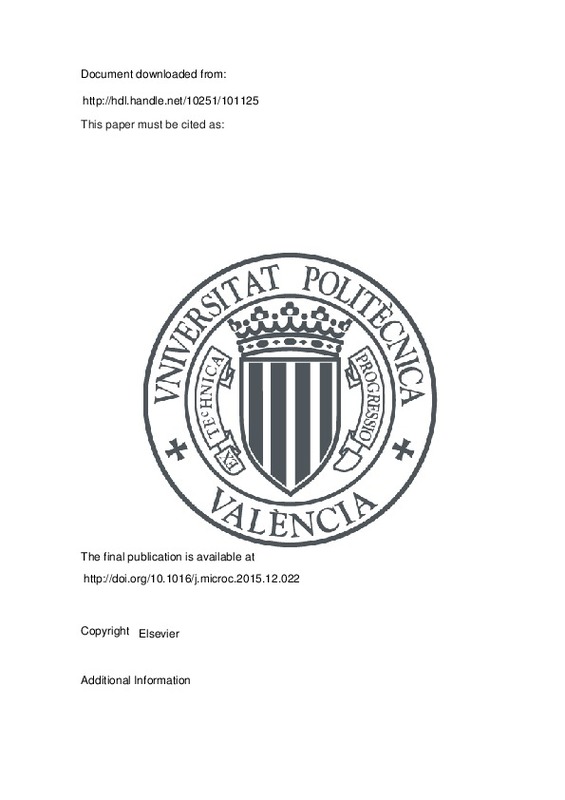JavaScript is disabled for your browser. Some features of this site may not work without it.
Buscar en RiuNet
Listar
Mi cuenta
Estadísticas
Ayuda RiuNet
Admin. UPV
Analytical study of waterlogged ivory from the Bajo de la campana site (Murcia, Spain)
Mostrar el registro sencillo del ítem
Ficheros en el ítem
| dc.contributor.author | Domenech Carbo, Mª Teresa
|
es_ES |
| dc.contributor.author | Buendía Ortuño, María del Milagro
|
es_ES |
| dc.contributor.author | Pasies Oviedo, Trinidad
|
es_ES |
| dc.contributor.author | Osete Cortina, Laura
|
es_ES |
| dc.date.accessioned | 2018-04-28T04:13:34Z | |
| dc.date.available | 2018-04-28T04:13:34Z | |
| dc.date.issued | 2016 | es_ES |
| dc.identifier.issn | 0026-265X | es_ES |
| dc.identifier.uri | http://hdl.handle.net/10251/101125 | |
| dc.description.abstract | [EN] This work reports an analytical study conducted prior to the conservation intervention of a collection of elephant tusks excavated from a wreck site of a 600-500 BC Phoenician trading vessel in Bajo de la campana (Murcia, Spain). The conservation state of ivory, determined by prolongated immersion in a marine environment, was established by a multi-technique methodology: light microscopy, field emission scanning electron microscopy X-ray microanalysis (FESEM-EDX), X-ray diffraction (XRD), Fourier transform infrared spectroscopy (FTIR), spectrophotometry and gas chromatography-mass spectrometry (GC-MS). The analyses demonstrated that the structure and composition of both tusk parts, namely the inner ivory and outer cementum, were altered due to characteristic diagenetic processes of a marine environment. Ca enrichment was observed in both tusk parts, which gave higher Ca/P molar ratio values than for ideal hydroxyapatite. Mg leaching was observed, together with uptake of exogenous elements (F, Cl, Si, Al, S, Na, Fe, Cu, Sr, Pb, Sn, Ag, V, Ni, Cd and Zn), which were prevalently identified in the external tusk part. Uptake of S and Fe was associated with the neoformation of pyrite framboids. The high carbonate content measured by FTIR, which agreed with the higher Ca/P ratios found in the archaeological tusk, was ascribed to the carbonate substitution of phosphate groups (type-B) in the bioapatite accompanied by some authigenic calcium carbonate that infilled ivory. An increased degree of crystallinity was observed when comparing the values of several crystallinity indices found in the archaeological bioapatite with those of a modern tusk, used as the reference material. Increased crystallinity prevalently took place in the cementurn. In accordance with increased crystallinity, the HPO42- content index indicated that the hydrated layer of bioapatite nanocrystals diminished in the archaeological tusk, and prevalently in the cementum. All these changes correlated with the significant organic matter loss reported for the archaeological tusk. Interestingly, remaining collagenous matter noticeably altered with enrichment in glycine and depletion in acid amino acids. Changes in the secondary structure of proteins were also recognised and associated with collagen gelatinisation. In addition to proteinaceous materials, small amounts of long-chain fatty acids, monoglycerides and cholesteryl oleate were identified by GC-MS. Cholesteryl oleate was associated with blood, which could have precipitated at the time of specimen death. The identification of large amounts of pyrite framboids and the high oleic acid/palmitic acid ratio in the archaeological tusk suggested minimal oxidative degradation processes, probably due to the slightly anoxic conditions of the underwater Bajo de la campana site environment. (C) 2016 Elsevier B.V. All rights reserved. | es_ES |
| dc.description.sponsorship | The authors wish to thank CITES Espana and Direccion General de Bienes Culturales y Ensenanzas Artisticas, de la Consejeria de Educacion, Cultura y Universidades de la Comunidad Autonoma de la Region de Murcia, Museo Nacional de Arqueologia Subacuatica. Financial support is gratefully acknowledged from Spanish "I + D + I MINECO" projects CTQ2011-28079-CO3-01 and 02 and CTQ2014-53736-C3-1-P supported by ERDEF funds. The authors also wish to thank Mr. Manuel Planes and Dr. Jose Luis Moya, technical supervisors of the Electron Microscopy Service of the Universitat Politecnica de Valencia. | es_ES |
| dc.language | Inglés | es_ES |
| dc.publisher | Elsevier | es_ES |
| dc.relation.ispartof | Microchemical Journal | es_ES |
| dc.rights | Reconocimiento - No comercial - Sin obra derivada (by-nc-nd) | es_ES |
| dc.subject | Waterlogged ivory | es_ES |
| dc.subject | FESEM-EDX | es_ES |
| dc.subject | XRD | es_ES |
| dc.subject | Fourier-self deconvolution curve fitting | es_ES |
| dc.subject | FTIR spectroscopy | es_ES |
| dc.subject | GC-MS | es_ES |
| dc.subject | Spectrophotometry | es_ES |
| dc.subject | Electron Microscopy Service of the UPV | |
| dc.subject.classification | PINTURA | es_ES |
| dc.title | Analytical study of waterlogged ivory from the Bajo de la campana site (Murcia, Spain) | es_ES |
| dc.type | Artículo | es_ES |
| dc.identifier.doi | 10.1016/j.microc.2015.12.022 | es_ES |
| dc.relation.projectID | info:eu-repo/grantAgreement/MICINN//CTQ2011-28079-C03-01/ES/DESARROLLO DE METODOS NANOELECTROQUIMICOS DE ANALISIS DE OBRA PICTORICA BASADOS EN LA TECNICA DE MICROSCOPIA DE FUERZA ATOMICA-VOLTAMETRIA DE NANOPARTICULAS/ | es_ES |
| dc.relation.projectID | info:eu-repo/grantAgreement/MINECO//CTQ2014-53736-C3-1-P/ES/APLICACION DE LAS TECNICAS NANOELECTROQUIMICAS Y BIOTECNOLOGIAS EN EL ESTUDIO Y CONSERVACION DEL PATRIMONIO EN METAL/ | es_ES |
| dc.rights.accessRights | Abierto | es_ES |
| dc.date.embargoEndDate | 2018-05-31 | es_ES |
| dc.contributor.affiliation | Universitat Politècnica de València. Departamento de Conservación y Restauración de Bienes Culturales - Departament de Conservació i Restauració de Béns Culturals | es_ES |
| dc.description.bibliographicCitation | Domenech Carbo, MT.; Buendía Ortuño, MDM.; Pasies Oviedo, T.; Osete Cortina, L. (2016). Analytical study of waterlogged ivory from the Bajo de la campana site (Murcia, Spain). Microchemical Journal. 126:381-405. https://doi.org/10.1016/j.microc.2015.12.022 | es_ES |
| dc.description.accrualMethod | S | es_ES |
| dc.relation.publisherversion | http://doi.org/10.1016/j.microc.2015.12.022 | es_ES |
| dc.description.upvformatpinicio | 381 | es_ES |
| dc.description.upvformatpfin | 405 | es_ES |
| dc.type.version | info:eu-repo/semantics/publishedVersion | es_ES |
| dc.description.volume | 126 | es_ES |
| dc.relation.pasarela | S\326835 | es_ES |
| dc.contributor.funder | Ministerio de Ciencia e Innovación | es_ES |







![[Cerrado]](/themes/UPV/images/candado.png)

